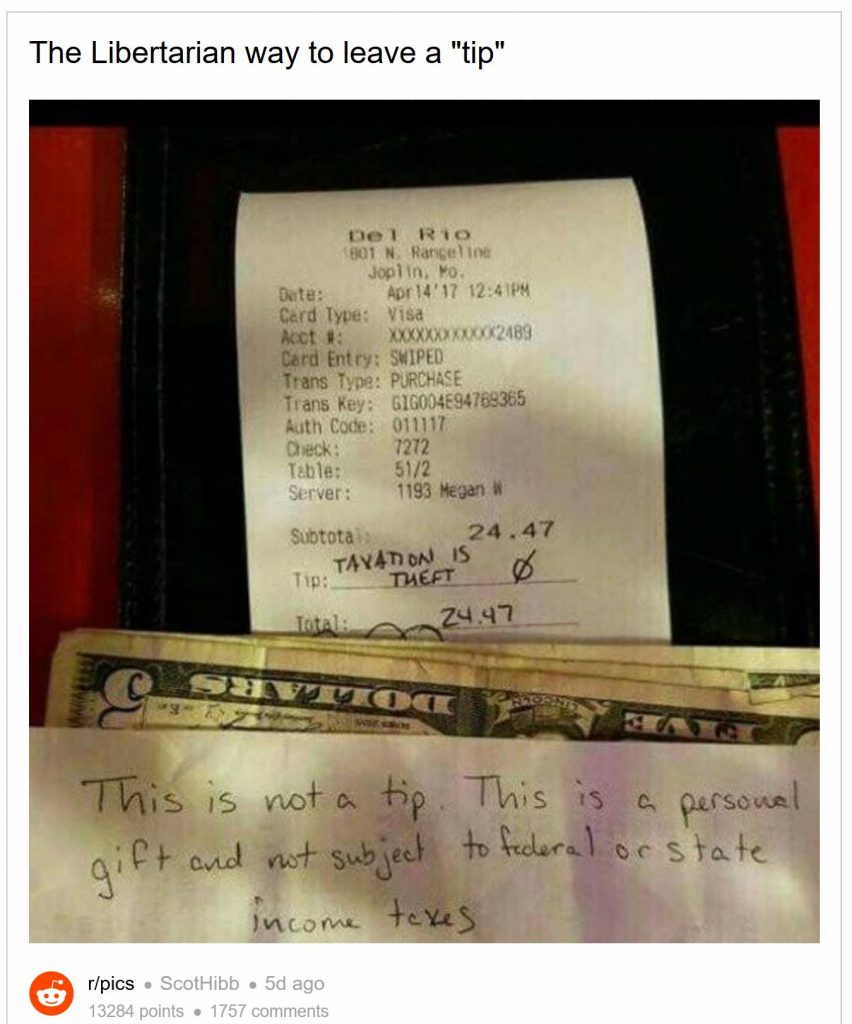The next time one of your friends says “name one place where Anarcho-Capitalism has been tried,” you can proudly respond “The Republic of Cospaia.” For nearly four hundred years, this tiny republic thrived in central Italy with no government, no rulers, no military, no bureaucracy, and no taxes!
Cospaia’s success is an unlikely story that illustrates how remarkably little is required for prosperity. Although it’s called a “Republic” it’s only in the sense that a council of elders with no enforcement power occasionally met in the church. This landlocked territory had an area of only 330 hectares (815 acres), about the size of a large farm. The population varied over the centuries but was usually around 300 people, with less than 100 households. In the beginning the population was illiterate, with the exception of the parish priest. The republic was never invaded, or placed under the control of a foreign power, except for a brief period during the Napoleonic Wars (a conflict they survived). Despite being a landlocked territory, with a largely uneducated population, removed from major trade routes, Cospaia thrived and became the envy of its neighbors, because for neatly four hundred years they avoided the oppressive hand of government.
The story of Cospaia begins in 1440. During this period the Italian peninsula was composed of numerous small kingdoms. One of these kingdoms was known as the Papal States, and was ruled by the Pope in Rome. Its neighbor to the north was the Republic of Florence, ruled by the Medici Family. In 1431 Eugene IV was elected Pope and took out a loan of 25,000 gold Florins from Cosimo di Giovanni de’ Medici, lead banker of the day and Chief Power broker of the Republic of Florence. This was not an era of central banking and fiat currencies, so even governments had to put up collateral if they wanted a loan. So, the Pope put up the town of Borgo Sansepolcro and its surroundings in the Upper Tiber Valley as collateral against the loan. Imagine President Obama putting up California as collateral to the Chinese to pay for Obama Care.
After 10 years the Papal States defaulted on their loan and surveyors from both Florence and the Papal States agreed that one of the new boundaries between the states would be a “Rio” (Latin for “river”) on the upper Tiber. But the surveyors made a mistake. There was more than one river in the region. An upper tributary split into two right where the village of Cospaia was located.
Even though the residents of Cospaia were illiterate, they realized right away their good fortune. Since they now found themselves outside the jurisdiction of both the Papal States and the Republic of Florence. The people of Cospaia quickly declared themselves an independent Republic. The rulers of both the Papal States and the Republic of Florence saw the value in having a “buffer state” between their lands, and neither pushed to have Cospaia incorporated into their states. Thus began 385 years of blissful anarchy.
In the beginning the economy of Cospaia was based on barter. Despite their lack of hard currency or education the people of Cospaia were better off than the neighboring villages under the rule of a state. As an Anarchist Republic they had no taxes to pay, no arbitrary rules imposed by rulers to benefit the well connected. The men of Cospaia were not conscripted to fight in wars for Rome or Florence, and since they had no rulers to represent them they had no one to get them involved in entangling alliances which could backfire and draw them into war. The inhabitants of Cospaia were free to pursue their trades and raise their families in the manner they saw fit. Being without rulers allowed people to pursue the most profitable use of their time and energy.
In 1574 the people of Cospaia discovered an extremely profitable use of their time and talent. A crop from the new world was introduced that influences the region to this day. The crop was tobacco. Tobacco has been extremely popular throughout history, everywhere it has been introduced, and Renaissance Italy was no exception. Cospaia soon became known for high quality tobacco. Adding to the demand for the crop were the restrictions imposed by states in the Italian peninsula on the cultivation and use of tobacco. Many people think that the prohibition of tobacco use is a 20th century invention, however the morality police were alive and well during the 17th century as well. In 1624 Pope Urban VIII issued a papal bull making the use of tobacco in any holy place punishable by excommunication. The prohibition remained in place until 1724 when it was abolished by Pope Benedict VIII. Of course the regulations against tobacco only helped the Cospaian economy, the decrease in supply and absence of any regulations or tariffs made Cospaia a hub of the tobacco trade. Soon warehouses were set up to take advantage of the lucrative trade. Many of these warehouse were run by Jews from Genoa, Livorno, Civitavecchia, Naples, and Ancona. Jews in Italy were a persecuted and closely watched minority by the surrounding states. At various times they were forbidden from owning property, and restricted from trading with Christians. So the laissez faire economy of Cospaia allowed this persecuted minority to survive and thrive despite the aggression of the surrounding states.
Throughout its history Cospaia had no rulers, no judiciary, and no written laws other than phrase “Perpetua et Firma Libertas,” which was inscribed over their church in 1610. Roughly translated, “Eternal and Firm Liberty.”
Continue reading…
From Daily Anarchist [Original article gone.]

